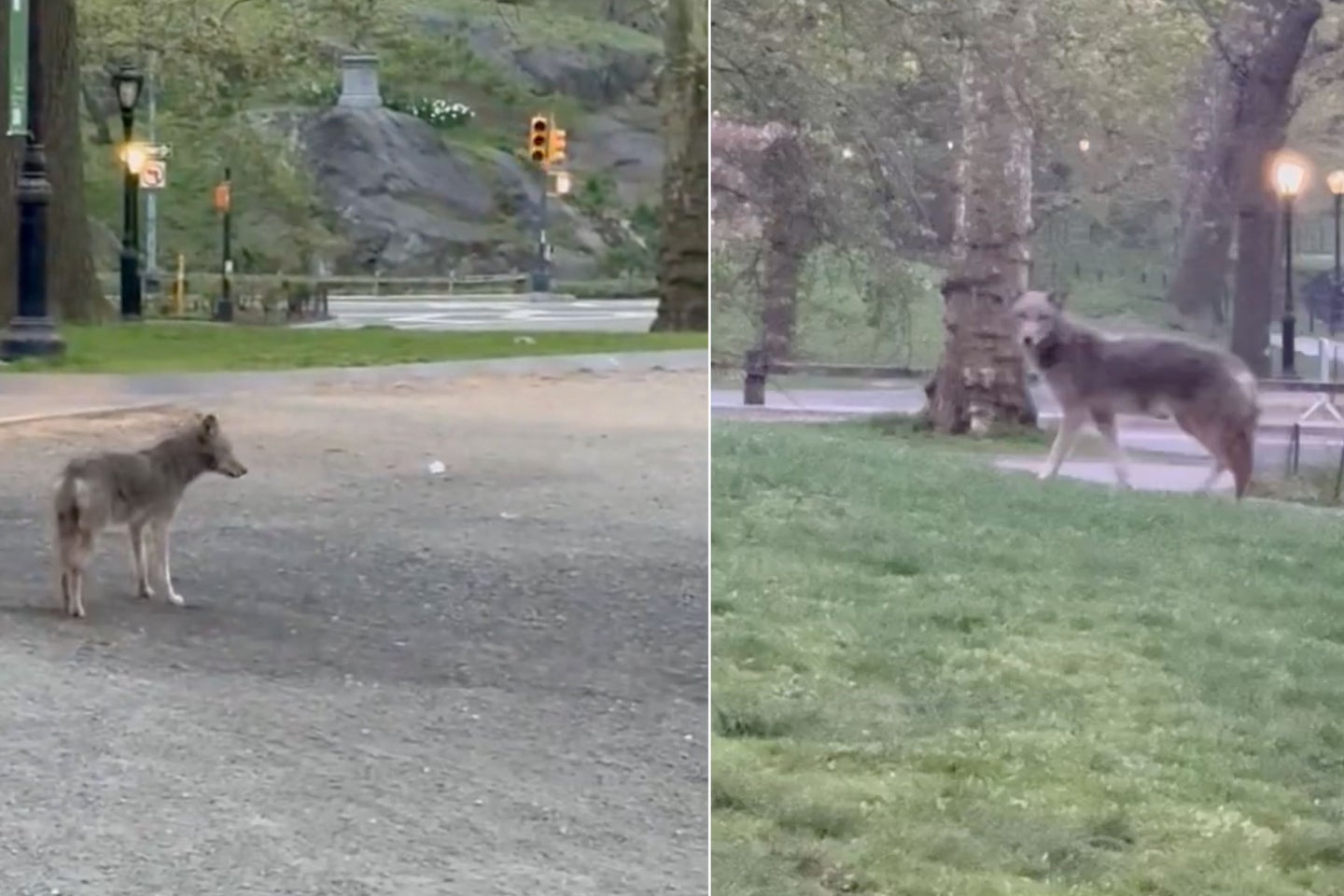Watch: “Giant” Coyote Prowls New York City’s Central Park

Coyotes can survive just about anywhere—even in the middle of the Big Apple. A New York City man recently encountered a coyote while on a run in Central Park, an iconic 853-acre park in Manhattan, and captured the whole thing on video. The footage shows the coyote wandering around the park, pausing sporadically to look around.
Brett Cohn was jogging across the park’s 72nd Street Traverse on the morning of Saturday, April 20, when the unexpected encounter occurred. “All of sudden, I looked up and there’s like a giant coyote staring right at me,” Cohn told the NY Post, a newspaper that called it a “hair-raising encounter” though the coyote didn’t show any signs of aggression.
“I was not expecting to see a coyote,” added Cohn. “At first, I thought it was a dog off the leash. But then when I saw its face that looked more like a wolf or a coyote.”
According to National Geographic, the wild canines, which weigh 20 to 50 pounds, once lived primarily on North America’s open prairies and deserts. Today, they are dispersed throughout forests, mountains, and even urban areas—putting their population numbers likely at all-time highs.
Coyote sightings in Manhattan are rare but not unheard of. According to the Central Park Conservancy, coyotes have been spotted in and around the city since the 1930s. They likely raise pups in Central Park and typically feed on rodents, birds, vegetation, insects, and carrion.
Read Next: A Pack of Wolves Ate an Elk on a High School Football Field in Montana
Officials say the coyote recently captured on video did not appear to be rabid. “We have no reason to believe this particular coyote is unhealthy or poses a threat to human safety,” said the New York City Parks Department in a statement. “However, we advise everyone to keep their distance and avoid close contact.”
The department also stresses that the public should avoid feeding coyotes—something that a woman was photographed doing in San Francisco several years ago.
The post Watch: “Giant” Coyote Prowls New York City’s Central Park appeared first on Field & Stream.
Articles may contain affiliate links which enable us to share in the revenue of any purchases made.
